The pharmaceutical label is an indispensable product label for pharmaceuticals. It can be said that it is also an identity card for pharmaceutical products and an important production process in the packaging and printing process. The main contents of the medical label should usually include: product name, symptom adaption, production date, production batch number, specifications, quantity, precautions, shelf life, usage usage, storage environment requirements, and manufacturer's name. Product labels are printed in monochrome, but also in multi-color overprinting or overprinting; in offset printing, in coated paper and in adhesive paper. From the perspective of healthy and safe use, the quality control of medical labels is a very important technical link. Therefore, the instructions in the product layout must be clear and legible, and the printed colors must be accurate and consistent. It can be seen that the medical label should have the use requirements that are easy to identify and have a good anti-counterfeiting effect. A considerable part of the medical labels are printed using the traditional letterpress printing process. In the past, in the clinical production practice, the author also printed medical label products, and has personal experience in the technology of letterpress printing of medical product labels. Here, we will discuss the process control technology experience with the letterpress printing process.
Reasonable design of medical label layout printing color
Medicinal labels generally use a neutral series of colors, in which the print layout of cool colors can give the patient a sense of peace and tranquillity. The design of pale red, gold red, and gold print layouts will enable the patient to have a psychological feeling of restoring vitality, yang, health and vitality. Blue and silver layouts give the patient a sense of security. The design of the printing layout color can also be based on the difference in the characteristics of the use of drugs. Among the nourishing and nutrient-type drugs, the printing plate is designed mainly in gold, bronze, brown or red, and is appropriately matched with other colors. Analgesics, sedation, sleeping, antihypertensive and cardiovascular diseases should be based on green and blue color. An insect repellent is packaged in white and is lightly colored. Anti-inflammatory drugs such as cough Xiaoyu, Qingliangjiedu granules and other labels are generally printed green. The rational design of medical label printing colors can make patients feel safe in their minds and obtain better curative effect.
Accurate ink formulation using principle of change of three primary colors
The pure color of medical label printing is the basic requirement for product quality. Therefore, how to make accurate ink deployment is a very important technical link. According to the principle of three primary colors, except for gold and silver colors (substrates are materials for aluminum spray paper), any color can be blended with different proportions of three primary colors. If the three primary inks are blended in equal amounts, they can become nearly black. Tricolor inks are mixed in the same amount and added with different proportions of white ink to be formulated into light grey inks of various shades. If the three primary color inks are mixed in various proportions, they can be blended into a variety of different hue inter-color or multi-color, but their hue is biased towards a large proportion of the primary color hue. If the two primary inks are mixed in the same amount, they can be adjusted to become the standard inter-color. After the two primary inks are mixed in different proportions, they can be mixed into different colors, but the hue tends to be larger. Hue. In addition, in any color ink, the hue becomes brighter after adding the white ink. Conversely, after adding black ink, the hue becomes dark. The method of blending ink is appropriate, which directly affects the color quality of printing. Therefore, when deploying ink, it is necessary to analyze the excellent phase based on the original document, and determine which of the inks should be used to perform the blending. For example, to adjust the lake blue ink, based on visual experience plus practical experience can be initially determined, in which the white ink is the main color, peacock blue is the auxiliary color should be slightly increased, such as deeper and more subtle plus product blue. As long as the main color is determined, the other colors are auxiliary colors, which should be gradually added and stirred evenly. Then, use two pieces of paper (the same as the printing paper). One of the papers is coated with a little of the adjusted ink, and the other paper is used to scrape it to approximately the same thickness as the printed ink layer, and then compared with the original. See if it is right. When comparing samples, it is necessary to compare the thin and light parts of the ink layer on the paper surface in order to see more accurately. When you transfer ink, you must also master a principle that minimizes the use of different colors of ink, that is, can be tuned with two inks, do not use three ink to adjust, so as not to reduce the gloss of the ink. On the other hand, the color tone of the scraping ink is slightly darker than the original color, so that the printed color sample can be accurate or close to some.
After the sample's ink hue is quasi-adjusted, you can adjust the ink in batches according to their respective ink proportions.
Several Process Technology Measures to Improve the Printing Quality of Label Products
1, pay attention to the technical control of paper cutting process. The paper's specification accuracy directly affects the overprint accuracy of the product. Because of different machine structures, their front gauges and pull gauge positions are not the same, so that if the edge of the paper is not squarely cut and there are beveled edges or wavy edges, misprints will occur. This requires glue-convex products, the side of the paper must be cut into right angles, straight lines, there must be no bevel or wave edge phenomenon. In order to improve the cutting accuracy of the paper, the thickness of the cutting must be strictly controlled, because the thicker the paper stack and the softer the paper, the more the paper surface is deformed when the paper presser presses down, so the thickness of each stack is more Less, the more conducive to improving the cutting accuracy of paper. In addition, the edge of the blade should remain sharp, and according to the hardness of the paper, select the appropriate blade angle, which is also an important measure to improve the cutting accuracy.
2, pay attention to the rational choice of printing plate bottom bracket. The letterpress printing machine with a round flattened structure and the characteristics of the printing plate base material have a great influence on the printing pressure, overprinting accuracy, and ink quality effects. The traditional wooden pallet, the material is not solid, squareness, flatness and stability are relatively poor, prone to bowing and deformation, printing quality is difficult to guarantee. Therefore, letterpress printing should use solid, smooth, square, stable aluminum or cast iron and other metal materials, which is a reliable guarantee for improving the precision and ink quality of overprinting.
3, pay attention to the rational use of paper. Paper is very sensitive to changes in the temperature and humidity of the external environment. In particular, paper that has just been produced is most prone to stretching and variability due to changes in temperature and humidity, resulting in inaccurate product overprinting. In order to reduce the chance of this unfavorable situation, the newly produced paper will generally be stored for about half a year after it is shipped back. This makes the properties of the paper relatively stable, and it will not be easy to apply the paper once it is put into use. . In addition, it is also possible to hang the paper, and put the cut paper on the printing plant for several days. After the temperature and humidity of the printing room are balanced for a certain period of time, printing is also beneficial to the product registration.
4, pay attention to choose the right printing plate. There are many kinds of plate materials such as copper plate, zinc plate, and resin plate in the letterpress printing process. Due to the different characteristics of plate materials, there are obvious differences in their printability and printing quality, according to the ink affinity, ink transfer, gloss. In terms of degree and pressure effects, the resin version had the best performance, followed by copper and zinc. If you look at the printing quality of the outlets, the printing quality of copper plates is better, and the expansion rate of outlets is also the least. Therefore, according to the characteristics of the product, a reasonable selection of printing materials for printing, in order to better improve the product's printing quality.
5, pay attention to a reasonable arrangement of printing color sequence. Reasonably arranging printing color sequence is an important measure to improve printing quality. Arranging the printing color sequence rationally should be mainly considered from these aspects, that is, considering the arrangement of the printing color sequence according to the characteristics of the substrate, and arranging the color sequence according to the differences in the structure of the printing machine. According to the different layout of the printing plate layout, the color sequence is arranged; the color sequence is considered according to the original color characteristics; the color sequence is arranged according to the difference of the ink characteristics; and the color sequence is arranged according to the ink drying characteristics. This scientific and rational arrangement of printing color sequence can better improve the production efficiency and product printing quality.
6, pay attention to a good lining process technology. Lining is the medium for the transfer of pressure and blotting. Its characteristics, as well as the product's registration and ink quality. Therefore, the coefficient of deformation of the lining material should be smaller, and the material should be neutral and hard. At the same time, the thickness of the lining must be determined in strict accordance with the technical parameters of the equipment specification. In addition, the lining must be tightly packed, and there must be no loosening or kicking. The lining must not be repeatedly patched or hollowed out to prevent overprinting and ghosting.
7, pay attention to adjust the appropriate printing pressure. The printing pressure should be adjusted evenly and moderately. If the pressure is too high, the printed sheets will be stretched and deformed, resulting in overprinting.
Therefore, proper printing pressure should be adjusted so that the printing pressure cannot be biased so as to avoid roughening and enlargement of the printing plate edge.
8, pay attention to product overprint production cycle. After the printing of the previous color or a few colors of the printed product, overprinting should be carried out immediately so that the printing product may not be stretched due to time delays, resulting in the failure of overprinting to produce quality defects.
9, pay attention to prevent the printing products appear dirty phenomenon. When using the letterpress process to print pharmaceutical label products, when the paper surface gloss is good, the paper is acidic, the ink layer is dried, the printing ink supply is large, the ink drying speed is slow, and the semi-finished products are stacked too high, it is easy to cause the back of the product. Dirty. The solution is: use the "deep ink thin printing" process for printing, that is, to adjust the hue of the ink darker, so that the printing ink layer thinner, so that it can not only meet the requirements of the printing ink color, but also reduce the chance of dirty. In addition, you can add a little dry oil in the ink, so that the ink layer is dry at the right time; In the ink, add a suitable anti-adhesive agent, so that the ink surface of the printed product is not easy to appear transfer phenomenon; the surface of the ink layer of the printed product is properly dusted to prevent The surface of the ink layer is transferred to the back of the printed product; the amount of the stacked semi-finished product is appropriately reduced, and the semi-finished product is dried by a drying rack.
10. Pay attention to preventing the paste layout from appearing on the printed page. When the printing pressure is uneven or heavy, the ink particles are too thick, the ink flowability is poor, there is a powder falling on the paper surface, the hair is pulled up, the position of the ink roller is not adjusted, and there is a poor contact between the ink roller and the ink roller, etc. It is easy to cause stencil printing. In this regard, appropriate measures should be taken to adjust.
11, pay attention to prevent the appearance of crystallization of the printing plate layout. When the dry oil in the ink is added too much, the surface of the ink on the surface of the print is too dry to form a glass surface, so that the overprinted ink is difficult to adhere to the background color of the printed product. Even if it can be printed, the ink color is only showing obvious signs of blooming. It is the phenomenon of ink film crystallization. To prevent crystallization of the ink film on the printed product, it is necessary to strictly control the amount of dry oil and minimize the overprint production cycle. For semi-finished products where crystallization has occurred, add soap crumbs to the overprinted ink. The practice is: first put the soap crumbs into a slurry with resin oil, then add the ink is easier to stir evenly. After adding ink and soap debris to the ink, add a little dry oil. Otherwise, the overprinting ink layer will appear slow-drying.
12. Pay attention to prevent the occurrence of flowering in the ink on the printed page. When the printing pressure is not uniform or too light; the lining surface is deformed under pressure and loses good flatness; the paper surface appears powder, pulls hair and adheres to the layout or ink roller; the ink roller colloid appears uneven core causing ink unevenness; When the phenomenon of crystallization occurs in the printed ink of the printed product, and when there is a case where the anti-sticking agent in the ink is added too much or there is no even stirring, it is easy to make the ink of the printed product fade, and corresponding measures should be taken to deal with it.
13. Pay attention to the protection of printed semi-finished products. If the climate is fickle, semi-finished products after printing should be sealed with plastic film to avoid stretching and variability and ensure the quality of overprinting.
In summary, improving the quality of label printing of pharmaceutical products is the basic requirement for the use of products. Good quality labels of pharmaceutical products can give people a sense of trust and security when used.
Lanyard
1.What is lanyard:
A lanyard is a cord or strap that is worn around the neck to hold an identification badge, whistle, keys or other small object. You can see lanyards in use everywhere by businesses, schools, hospitals, at special events, conventions, reunions, and in many recreationall activities.
2.Lanyard Category:
Based on different material used for lanyard production, here are five kinds of Zipper: Heat Transfer Lanyard , Silk-Screen Lanyard , Silicone Lanyard, Zipper Lanyard and Jacquard Lanyard.
2.1. Heat Transfer Lanyard
Sublimation Lanyard is designed in the pattern, production copperplate, electric carving through the mechanical sub-color pattern engraved on copperplate. Copperplate printing machine and then get on the pattern printed on the PET film, and then through the mechanical heat transfer lanyard pattern is transferred to the product.
Sublimation lanyard content can be product brands, publicity posters, slogans, may also be sporting events, concerts, commercial activities, the name and other gatherings LOGO. Nylon, cotton, bamboo fiber can not withstand high temperatures, and high cost to go through a special process to heat transfer lanyard.Such as custom printed lanyard,double hook lanyard.
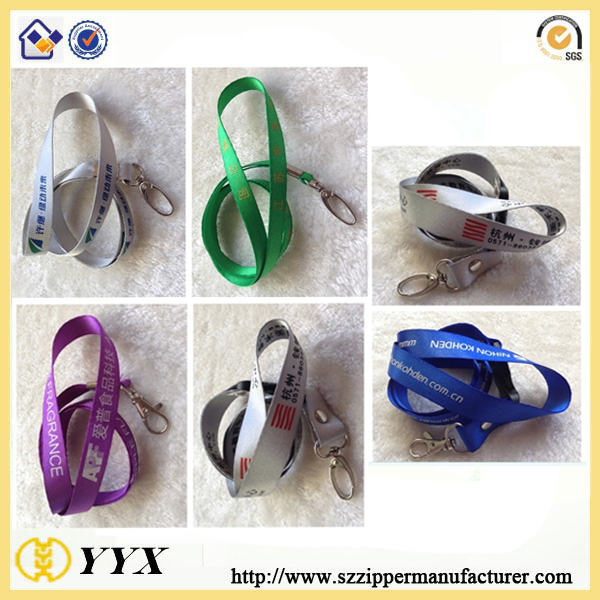
2.2. Silk-Screen Lanyard
Silk webbing lanyard is the production process LOGO traditional common expression, LOGO is printing ink by screen printing on the surface of the webbing. Printing out of LOGO texture clear, strong sense of three-dimensional, high definition, good adhesion.
Generally can be divided into screen printing lanyard phone lanyard, U disk lanyard, MP3 lanyard, working lanyard, lanyard exhibition, documents cards sling, brand badge lanyard, badge lanyard, lanyard visit visitors Wait. Product brands, publicity posters, slogans, may also be sporting events, concerts, commercial activities, the name and other gatherings LOGO.
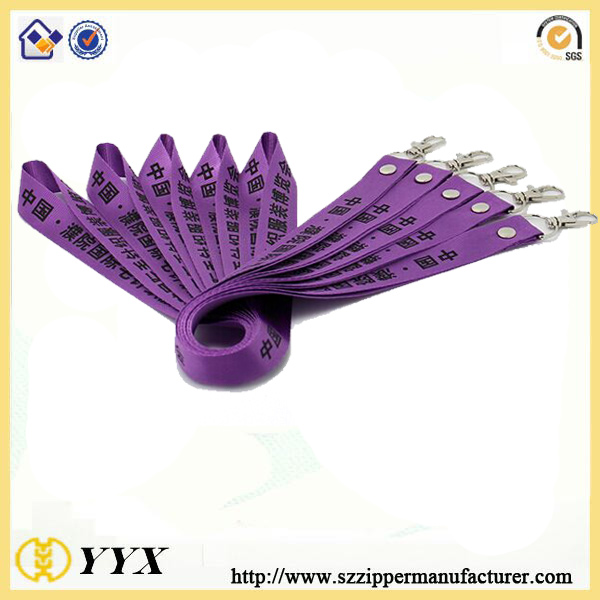
2.3. Silicone Lanyard
Silica gel is silica gel mSiO2 · nH2O made of a suitable dehydrating porous materials of different particle sizes. Has an open porous structure, specific surface area (surface area per unit mass) is large, can absorb many substances, it is a good desiccant, adsorbent and catalyst supports.
Silica gel lanyard using silica gel as a material made of, but not limited to mobile phone ornaments, can be widely used in MP3, MP4, digital cameras, small flashlights and other products of the match.
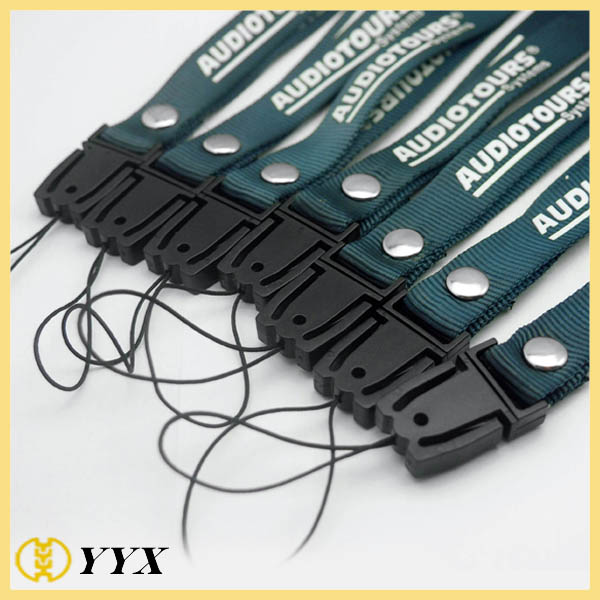
2.4. Zipper Lanyard
Zipper lanyard and zipper is shaped the same,It is the perfect companion for the mobile phone, brand certificate, key ring. Beautiful and practical zipper manufacturing plating with laser engraving and other advanced technology refined elegance applicable Peigua digital cameras MP3 U disk, PU rope, PVC rope, zipper cell phone rope, rope, harnesses, hand Wan belt.In addition to metal beads, other materials can be printed corporate LOGO logo, and in different parts and assembly methods, play publicity, promotional purposes. According to customer needs, design and manufacture many styles, diverse fashion lanyard!
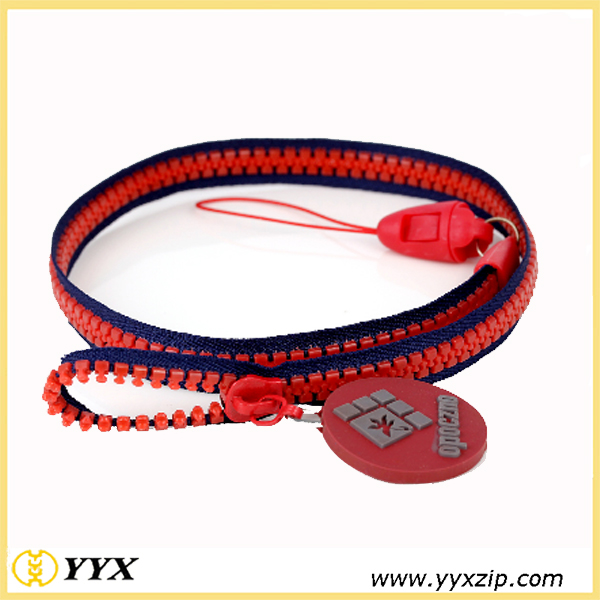
2.5. Jacquard Lanyard
Jacquard Ribbon Ribbon is a high-grade varieties.
Jacquard Ribbon generally used for high profile clothing materials or decoration materials (such as curtains, sand release material). Jacquard manufacturing process complicated. Warp and weft interwoven ups and downs, to form different patterns, convex, more weave flowers, birds, fish, insects, animals and other beautiful patterns.
Jacquard Ribbon soft, delicate, unique and smooth texture, good gloss, good drape and breathability, color fastness (yarn dyeing). Weft jacquard pattern amplitude with large and beautiful, color structured three-dimensional sense, and by the Jacquard pattern is relatively simple, relatively simple.
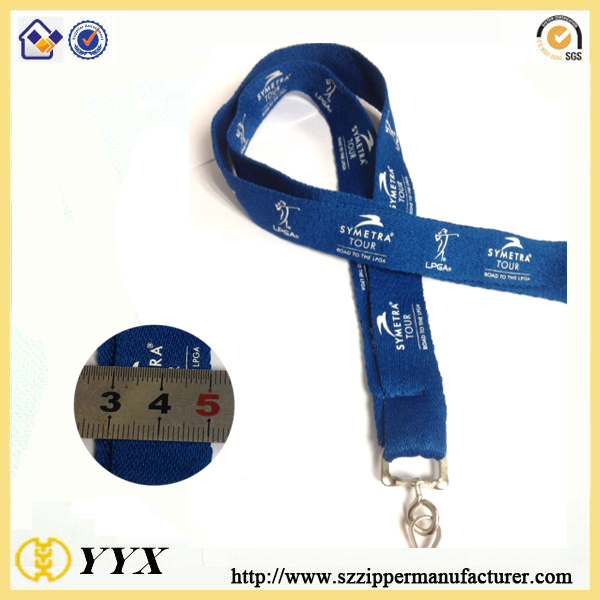
Lanyards,Custom Lanyard,Key Lanyards,Custom Lanyards,Lanyards For Keys
Shenzhen Yiyixing Zipper Manufacture Co.,Ltd , https://www.nicekeychain.com